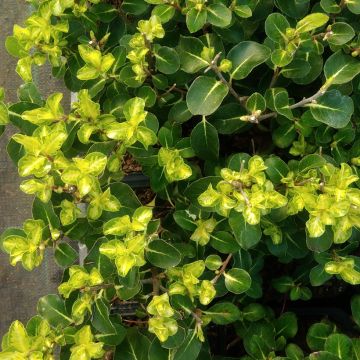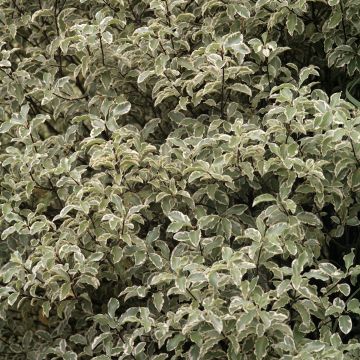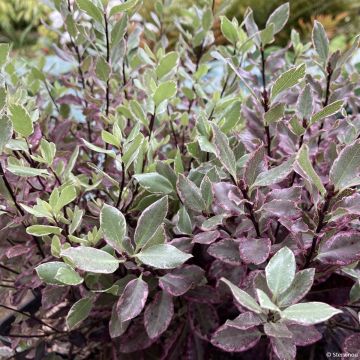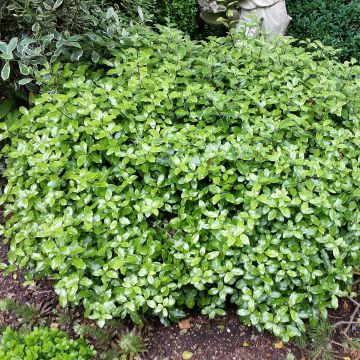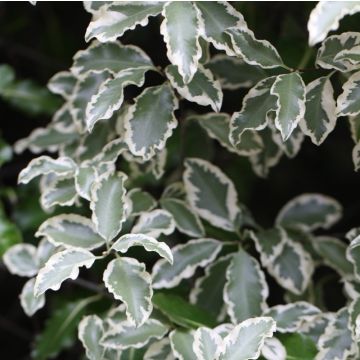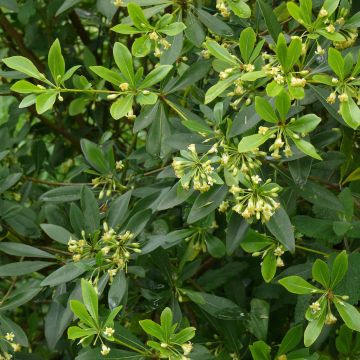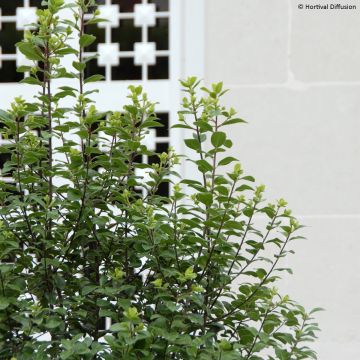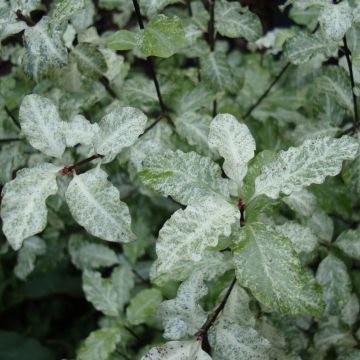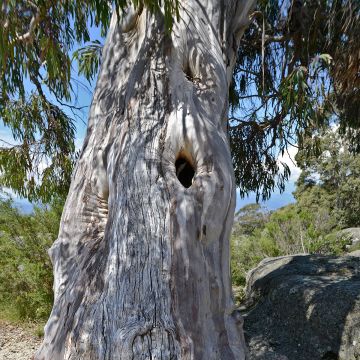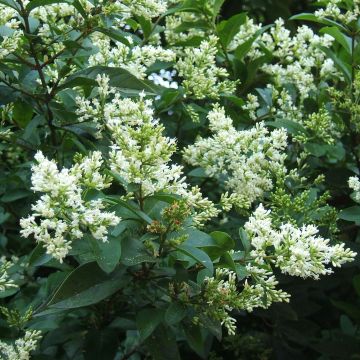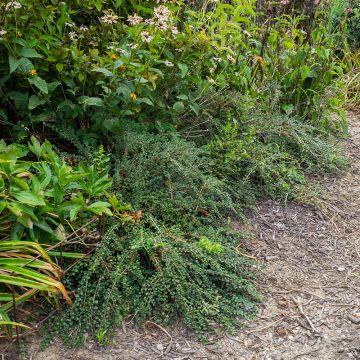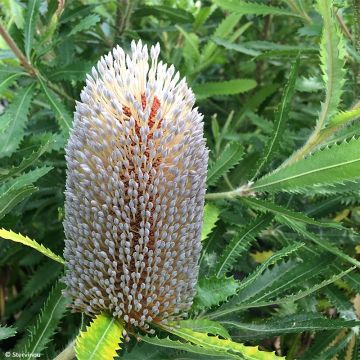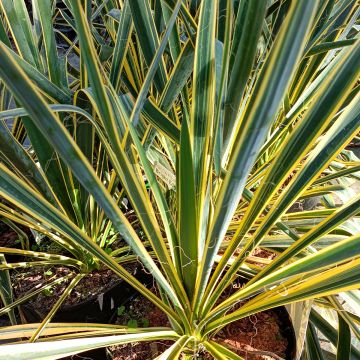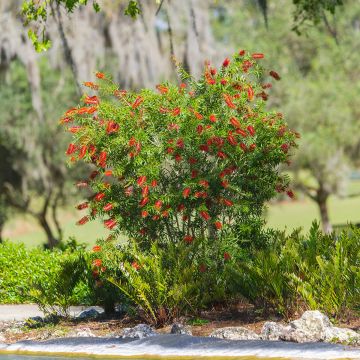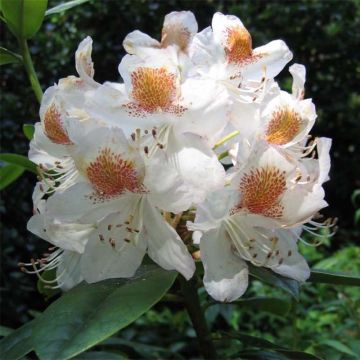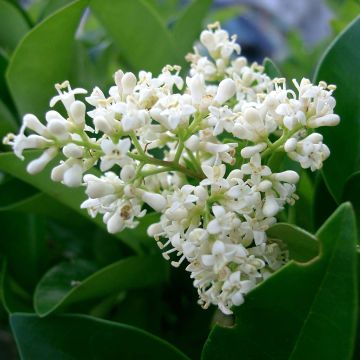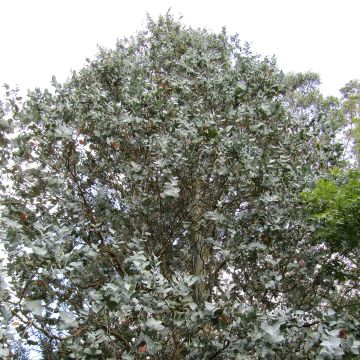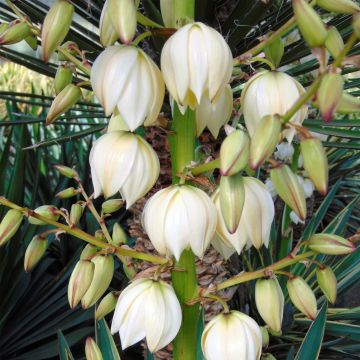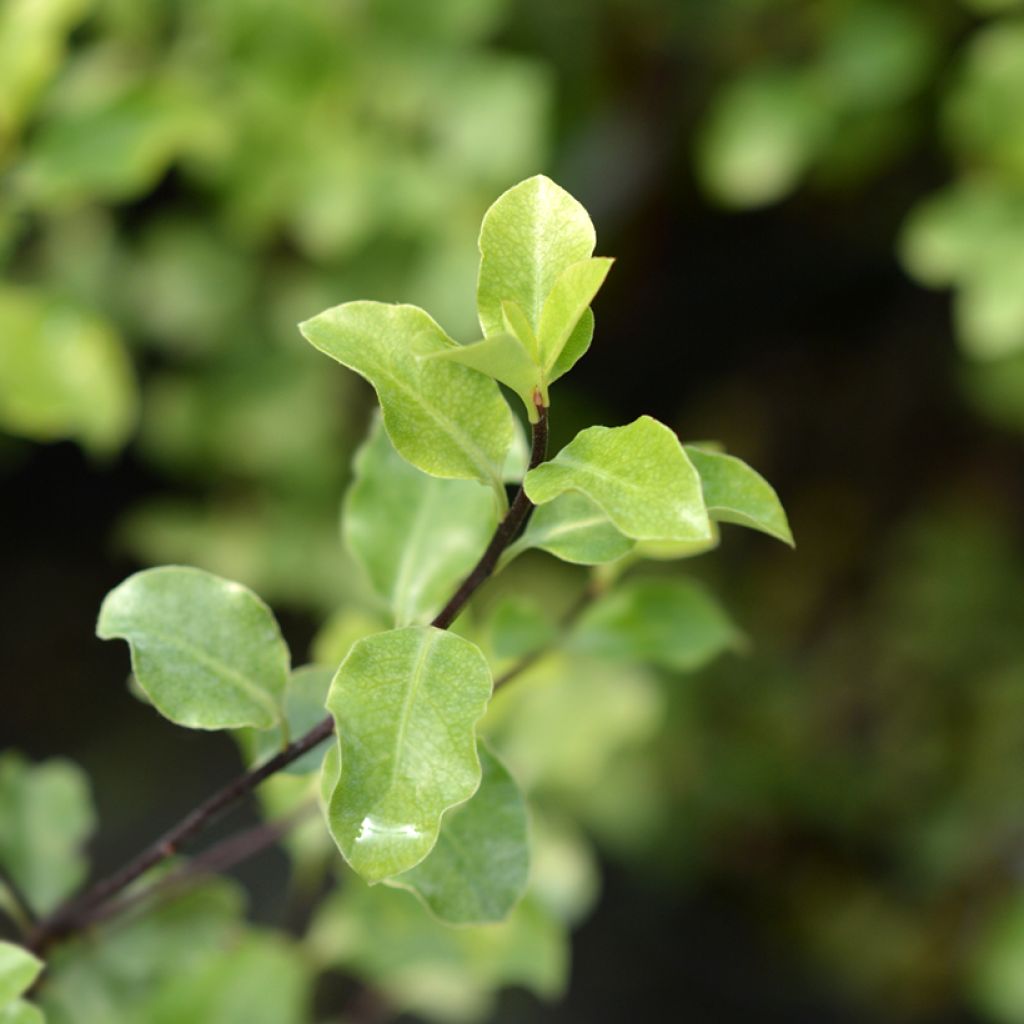

Pittosporum tenuifolium Green Elf - Kohuhu
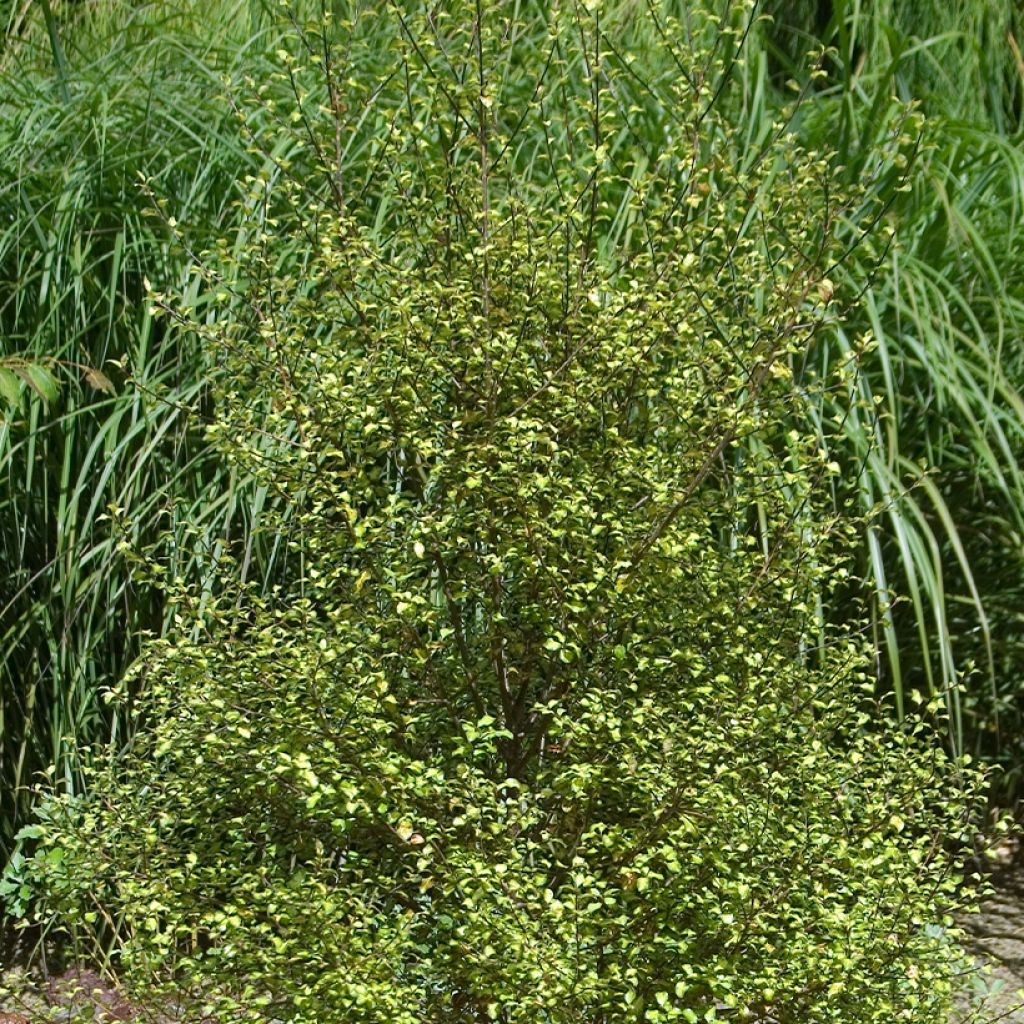

Pittosporum tenuifolium Green Elf - Kohuhu
Pittosporum tenuifolium Green Elf - Kohuhu
Pittosporum tenuifolium Green elf
Tawhiwhi, Kohuhu, Black Matipo, New Zealand Pittosporum
This item cannot be shipped to the selected country
Delivery charge from €5.90
More information
Schedule delivery date,
and select date in basket
This plant carries a 24 months recovery warranty
More information
We guarantee the quality of our plants for a full growing cycle, and will replace at our expense any plant that fails to recover under normal climatic and planting conditions.
From €5.90 for pickup delivery and €6.90 for home delivery
Express home delivery from €8.90.
Does this plant fit my garden?
Set up your Plantfit profile →
Description
The Pittosporum tenuifolium Green Elf is the variety of pittosporum that has the smallest leaves ever observed in the tenuifolium species. It forms a medium-sized bushy shrub with branches spreading in all directions, which tolerates pruning very well. The stems are particularly thin and of a beautiful black colour and highlight the very small evergreen leaves of a grayish green colour. The overall appearance is particularly delicate, reminiscent of certain ferns or houseplants (Adiantum, Muehlenbeckia). This plant of mild climate can also be brought indoors during winter in frost-prone climates.
The Pittosporum tenuifolium, or Pittosporum with small leaves, is a shrub of the Pittosporaceae family, a rather confidential botanical family in our gardens. It is mainly represented by the genus Pittosporum, of which P. tobira is the most well-known, as well as by a climbing plant sometimes encountered in the southern zone, Sollya heterophylla. Originating from dry regions located east of the New Zealand Alps, it is a vigorous and dense shrub, with an elegant habit and beautiful glossy green foliage. In May-June, its small dark flowers emit a delicious honey scent, especially at night. This plant of mild climate thrives in sunny positions, well-drained soil, in a dry garden, or in a large pot to be stored in cold climates and is suitable for coastal areas. The species tenuifolium is frequently used, especially as a hedge or standalone, and has given rise to numerous varieties, including purple or golden foliage ones. Pittosporums with small leaves are preferred plants for topiary art in the mildest areas of France, as they tolerate pruning very well.
'Green Elf' on its part is a magnificent variety with a recognizable aesthetic. Its thin, dark stems bear very small leaves (about 2 cm (0.8 in)) of a slightly grayish green colour, forming an extremely airy ensemble, as light as a gypsophila! This highly decorative habit can also be shaped as desired by pruning with shears. This 'Green Elf' variety, unpruned, reaches a height of 2.50 m or more under favorable conditions, with a spread of 1.50 m.
The Pittosporum tenuifolium Green Elf can be integrated into a geometric bed in a contemporary garden by giving it a particular shape, kept as a low or medium hedge, or its growth can be limited to keep it in a container for many years in cold climates. Because this tender plant does not tolerate severe cold, it will withstand -7°C, or even -10°C under very good conditions (absence of wind, well-drained soil, protection from a wall). Therefore, it should be overwintered in a sufficiently bright garage or in a conservatory if necessary. This pittosporum tolerates sea spray well, which allows it to be used without reservation in a free hedge, in a coastal garden. A graphic plant if ever there was one, Green Elf blends perfectly with modern architecture, whether in the ground or in a sleek designed container. Although its flowers are slightly scented but visually very discreet, its foliar aesthetics can be fully exploited. It will therefore harmonize perfectly with the regular bright green cushions formed by its cousin, Pittosporum tobira 'Nanum'. Purple foliage will also complement our grayish green-leaved Pittosporum very well, such as the superb Loropetalum chinense 'Black Pearl' with the additional advantage of a vibrant red flowering. The famous Lavender papillon with its airy flowers will create a poetic and decorative scene throughout the year.
Report an error about the product description
Pittosporum tenuifolium Green Elf - Kohuhu in pictures
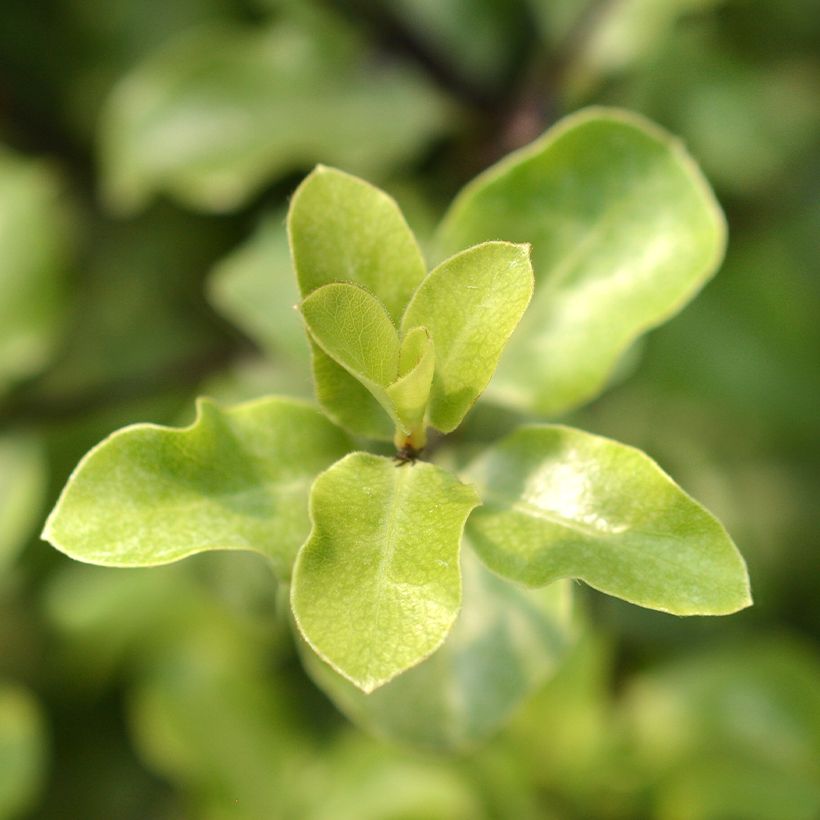

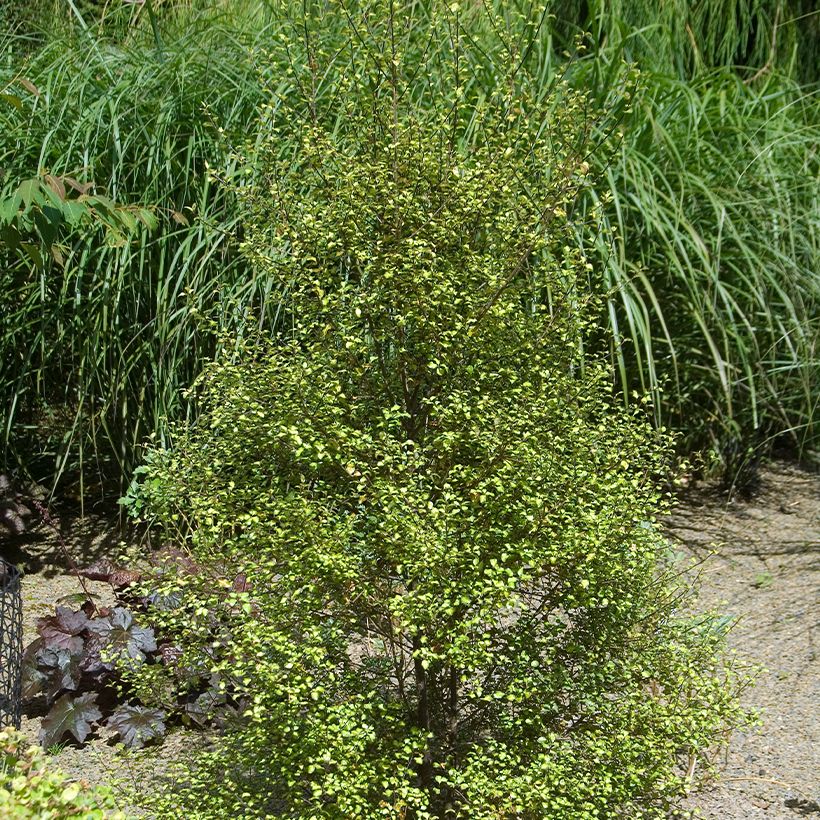

Plant habit
Flowering
Foliage
Botanical data
Pittosporum
tenuifolium
Green elf
Pittosporaceae
Tawhiwhi, Kohuhu, Black Matipo, New Zealand Pittosporum
Cultivar or hybrid
Other Pittosporum
Planting and care
The Pittosporum tenuifolium 'Green Elf' is preferably planted in spring in a cool climate, to allow it enough time to establish its roots before winter. It can also be planted in September in a mild climate, with thorough watering, as this month can still be very dry. Plant it in a fertile soil, not too chalky and well-drained. At planting, mix leaf compost and coarse sand with your garden soil at a ratio of 50%. In poorly draining soil, you can even add a good layer of coarse gravel at the bottom of the planting hole.
Water your subject generously once or twice a week to promote growth. This bush is not very hardy and its resistance to frost will depend a lot on its exposure. On the Mediterranean coast, it can be planted in full sun or partial shade, preferably sheltered from the mistral wind. On the Atlantic coast or in the southwest, it should be exposed to full sun, in a well-drained soil and in a wind-protected location. Soak the root ball before planting, then water well; immediately mulch the base. Install it along a south-facing wall in regions with harsh winters.
In a cooler climate than that of Anjou, cover it with winter protection or shelter it in a frost-free veranda, or a garage that is sufficiently bright for the winter season. To encourage branching during the first years of planting, pinch the young shoots. In mature plants, trim at the end of the season the branches that appear disheveled on the clump. It is entirely possible to shape it into a ball or a hedge, as it responds well to pruning.
Planting period
Intended location
Care
-
, onOrder confirmed
Reply from on Promesse de fleurs
Evergreen shrubs
Haven't found what you were looking for?
Hardiness is the lowest winter temperature a plant can endure without suffering serious damage or even dying. However, hardiness is affected by location (a sheltered area, such as a patio), protection (winter cover) and soil type (hardiness is improved by well-drained soil).

Photo Sharing Terms & Conditions
In order to encourage gardeners to interact and share their experiences, Promesse de fleurs offers various media enabling content to be uploaded onto its Site - in particular via the ‘Photo sharing’ module.
The User agrees to refrain from:
- Posting any content that is illegal, prejudicial, insulting, racist, inciteful to hatred, revisionist, contrary to public decency, that infringes on privacy or on the privacy rights of third parties, in particular the publicity rights of persons and goods, intellectual property rights, or the right to privacy.
- Submitting content on behalf of a third party;
- Impersonate the identity of a third party and/or publish any personal information about a third party;
In general, the User undertakes to refrain from any unethical behaviour.
All Content (in particular text, comments, files, images, photos, videos, creative works, etc.), which may be subject to property or intellectual property rights, image or other private rights, shall remain the property of the User, subject to the limited rights granted by the terms of the licence granted by Promesse de fleurs as stated below. Users are at liberty to publish or not to publish such Content on the Site, notably via the ‘Photo Sharing’ facility, and accept that this Content shall be made public and freely accessible, notably on the Internet.
Users further acknowledge, undertake to have ,and guarantee that they hold all necessary rights and permissions to publish such material on the Site, in particular with regard to the legislation in force pertaining to any privacy, property, intellectual property, image, or contractual rights, or rights of any other nature. By publishing such Content on the Site, Users acknowledge accepting full liability as publishers of the Content within the meaning of the law, and grant Promesse de fleurs, free of charge, an inclusive, worldwide licence for the said Content for the entire duration of its publication, including all reproduction, representation, up/downloading, displaying, performing, transmission, and storage rights.
Users also grant permission for their name to be linked to the Content and accept that this link may not always be made available.
By engaging in posting material, Users consent to their Content becoming automatically accessible on the Internet, in particular on other sites and/or blogs and/or web pages of the Promesse de fleurs site, including in particular social pages and the Promesse de fleurs catalogue.
Users may secure the removal of entrusted content free of charge by issuing a simple request via our contact form.
The flowering period indicated on our website applies to countries and regions located in USDA zone 8 (France, the United Kingdom, Ireland, the Netherlands, etc.)
It will vary according to where you live:
- In zones 9 to 10 (Italy, Spain, Greece, etc.), flowering will occur about 2 to 4 weeks earlier.
- In zones 6 to 7 (Germany, Poland, Slovenia, and lower mountainous regions), flowering will be delayed by 2 to 3 weeks.
- In zone 5 (Central Europe, Scandinavia), blooming will be delayed by 3 to 5 weeks.
In temperate climates, pruning of spring-flowering shrubs (forsythia, spireas, etc.) should be done just after flowering.
Pruning of summer-flowering shrubs (Indian Lilac, Perovskia, etc.) can be done in winter or spring.
In cold regions as well as with frost-sensitive plants, avoid pruning too early when severe frosts may still occur.
The planting period indicated on our website applies to countries and regions located in USDA zone 8 (France, United Kingdom, Ireland, Netherlands).
It will vary according to where you live:
- In Mediterranean zones (Marseille, Madrid, Milan, etc.), autumn and winter are the best planting periods.
- In continental zones (Strasbourg, Munich, Vienna, etc.), delay planting by 2 to 3 weeks in spring and bring it forward by 2 to 4 weeks in autumn.
- In mountainous regions (the Alps, Pyrenees, Carpathians, etc.), it is best to plant in late spring (May-June) or late summer (August-September).
The harvesting period indicated on our website applies to countries and regions in USDA zone 8 (France, England, Ireland, the Netherlands).
In colder areas (Scandinavia, Poland, Austria...) fruit and vegetable harvests are likely to be delayed by 3-4 weeks.
In warmer areas (Italy, Spain, Greece, etc.), harvesting will probably take place earlier, depending on weather conditions.
The sowing periods indicated on our website apply to countries and regions within USDA Zone 8 (France, UK, Ireland, Netherlands).
In colder areas (Scandinavia, Poland, Austria...), delay any outdoor sowing by 3-4 weeks, or sow under glass.
In warmer climes (Italy, Spain, Greece, etc.), bring outdoor sowing forward by a few weeks.

































